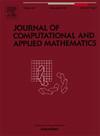具有随机便利产量的制度交换模型下的商品期权价格估值:用授粉优化算法对模型进行标定
IF 2.6
2区 数学
Q1 MATHEMATICS, APPLIED
Journal of Computational and Applied Mathematics
Pub Date : 2025-10-10
DOI:10.1016/j.cam.2025.117150
引用次数: 0
摘要
本研究工作旨在通过在马尔可夫转换框架内纳入随机便利收益的概念来构建商品现货价格模型。该模型采用风险中性测度下的Gibson-Schwartz商品模型,实现了便利收益和现货价格动态的制度切换。利用WTI原油现货价格,利用期望最大化算法估计了商品制度切换模型中所涉及的参数。然后,我们对商品期货合约和欧洲期权价格进行了半分析公式。基于WTI原油市场的欧式看涨期权价格,采用授粉优化算法对期权定价模型参数进行了标定。结果表明,所建立的马尔可夫切换模型的参数由传粉优化算法标定,其性能优于商品文献中常用的一些模型。本文章由计算机程序翻译,如有差异,请以英文原文为准。
Valuation of commodity option prices under a regime-switching model with stochastic convenience yield: Model calibration using flower pollination optimization algorithm
This research work seeks to construct a model for commodity spot prices by incorporating the concept of stochastic convenience yield within a Markov-switching framework. The model presented in this paper applies the Gibson-Schwartz commodity model under the risk-neutral measure, enabling regime-switching in the convenience yield and spot price dynamics. Using the WTI crude oil spot prices, the parameters involved in the proposed commodity regime-switching model are estimated by expectation–maximization algorithm. We then carry out a semi-analytical formula for the commodity futures contracts and European option price written on them. We calibrate the option pricing model parameters using the flower pollination optimization algorithm based on the European call option prices in WTI crude oil market. The results show that the provided Markov-switching model, whose parameters are calibrated by the flower pollination optimization algorithm is superior to the some common models in commodity literature.
求助全文
通过发布文献求助,成功后即可免费获取论文全文。
去求助
来源期刊
CiteScore
5.40
自引率
4.20%
发文量
437
审稿时长
3.0 months
期刊介绍:
The Journal of Computational and Applied Mathematics publishes original papers of high scientific value in all areas of computational and applied mathematics. The main interest of the Journal is in papers that describe and analyze new computational techniques for solving scientific or engineering problems. Also the improved analysis, including the effectiveness and applicability, of existing methods and algorithms is of importance. The computational efficiency (e.g. the convergence, stability, accuracy, ...) should be proved and illustrated by nontrivial numerical examples. Papers describing only variants of existing methods, without adding significant new computational properties are not of interest.
The audience consists of: applied mathematicians, numerical analysts, computational scientists and engineers.

 求助内容:
求助内容: 应助结果提醒方式:
应助结果提醒方式:


